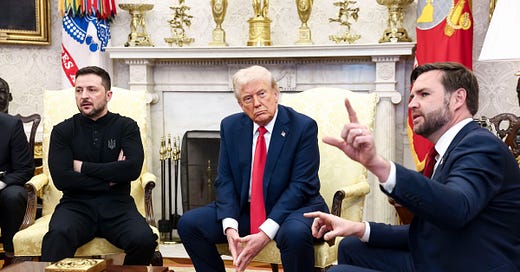
The key role played by Belfast in the defence of Ukraine from its Russian invaders has received only limited publicity. But it is no exaggeration to say that without the next generation light anti-tank weapon (NLAW) made available by the British Government to the Ukrainian Army, Russia might now be in command of the battlefield not only in the eastern Donbass region but in Kiev, Kharkiv and Odessa.
Some 5,000 of the lightweight weapons will have been delivered by the end of this month, with more on the way subject only to availability.
Developed and built in Belfast by Thales UK, from an original design by the Swedish defence giant Saab-Bofors, the shoulder-launched NLAW has destroyed more Russian tanks and other armoured vehicles than all of its rivals combined. The Russians fear it, the Ukrainians swear by it. So successful has it proved in the current conflict that it has even raised questions around the world about the future viability of the tank itself.
Adding to Putin’s discomfort, the Belfast-built Starstreak surface-to-air missile – the fastest and most lethal of its kind in existence – has helped even the war in the air that was widely supposed to go Russia’s way. Achieving a speed of more than 3,000 mph before discharging laser-guided submunitions at the target, Starstreak has already brought down a number of Russian aircraft and is being dispatched to Ukraine from Northern Ireland in increased numbers as a matter of urgency.
But we shouldn’t get too cocky. Thales UK is a subsidiary of the Thales Group, a defence systems and aerospace multinational, 25 per cent owned by the French state, that employs more that 80,000 people in 63 countries. Pronounced Talez, the group is headquartered, appropriately enough, in Paris’s La Défense district and listed on the Euronext Exchange, formerly the Paris Bourse. Its CEO, Patrice Caine, moonlights as a director of the beauty products firm L’Oréal.
It was in 1993 that Thales, then known as Thomson-CSF, first took a stake in a Belfast company, Shorts Missile Systems (SMS), that found itelf somewhat adrift following its separation from the planemaker Short Brothers, newly acquired by Bombardier of Canada. Shorts had an impressive pedigree in the missile business but, after years of decline, was in sore need of cash and fresh entrepreneurial energy. Thales provided both, working first with Bombardier, then, in 2000 – the same year that it bought Racal UK – acquiring full control. As Thales Air Defence Ltd, the Belfast plant has prospered not only in the highly competitive missile field, but, since 2016, as the home of the group’s Space Propulsion Integration Centre, providing state-of-the-art electric propulsion systems for orbital satellites.
In 2019, the Belfast site came up with a pioneering power unit for satellites, known as the Spacebus Neo Xenon Propulsion System (XPS), that was the first of its kind to be designed and built in the UK. Now at the heart of the French and European space programme, it provides the structural backbone of the latest generation of satellites, enabling them to reach their operational position and keep them functioning over a 15-year lifetime.
The company is the first prime contractor to have moved into the space sector in Northern Ireland and has acted as a catalyst to promote the development of space capability among suppliers, most of which are small and medium-sized enterprises (SMEs). Some 30 firms have now set up a Space Special Interest Group to grow the sector locally.
If it all feels like a long way from the Sunderland Flying Boat – a stalwart of the Second World War – or the 1980s Skyvan, both made by Short Bros, the real descent is from the Seacat, Tigercat and Blowpipe missiles designed and manufactured by SMS in the 1960s and ’70s. A tradition had been established on which Bombardier and Thales were able to build.
The role of Bofors – now owned by BAE Systems – in the development of the NLAW weapon should not be overlooked. Sweden, historically neutral but now actively considering membership of Nato, has been a force in weapons production for more than 350 years. When Britain’s Ministry of Defence turned to Bofors in the late 1990s, looking for a new type of weapon that attacked the turrets of tanks rather than their heavily protected fronts, the result was a world-beater. Thales UK secured the manufacturing rights for the UK and devolved the work to its Belfast plant, which has continued to refine and upgrade the product ever since.
Starstreak started life as a joint product of BAe and SMS under the name Thunderbolt. Much of the development took place in Belfast, which, as part of Thales, now offers the improved Starstreak II as well as an air-launched version and a naval variant known as Seastreak. Should Starstreak, in competition with the less advanced US Javelin missile, continue to prove itself in Ukraine, there can be little doubt that armed forces round the world will step up their interest.
At the same time, Bombardier’s former Belfast operation, since bought by Spirit Aerosystems of the US, does most of its business with Airbus, providing wings and nacelles for the company’s A220 and 320 series as well as for the revolutionary Cityairbus, an unmanned air taxi scheduled to make its first flight in 2023. The Belfast plant has some 2,700 workers and is Northern Ireland’s fourth-largest private sector employer. Its parent company is registered as a societas europaea – which means it answers to EU corporate law – with its main manufacturing base in Toulouse and its corporate headquarters in the Dutch city of Leiden.
Exports to the EU from both Thales and Spirit are regulated by the terms of the Northern Ireland Protocol, which keeps the province in the Single Market for goods. The Protocol is politically controversial but allows both companies free and frictionless access to the UK and Europe. At Spirit, there has been talk of strike action related not to the protocol but to the fact that wages are falling behind at a time of worsening inflation. At Thales, by contrast, a further 22 jobs have been advertised this month, including one for a “missile architect.” Shares in the group have risen by more than 40 per cent since the start of the conflict in Ukraine.









